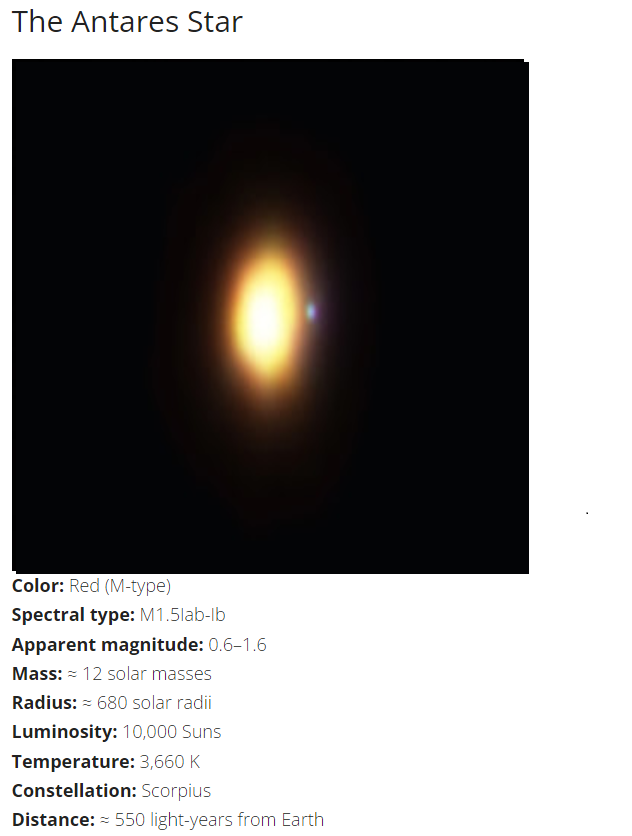Occultation in Astronomy | 03 May 2024
Why in News?
Recently, the Indian Institute of Astrophysics (IIA) has released a video capturing the occultation of the moon passing in front of the bright red star Antares (Jyeshtha).
Note:
- Since the moon is relatively close to the Earth, such occultations will be visible only from some locations on the globe, similar to why a solar eclipse is seen only from a particular part of the globe.
What is an Occultation in Astronomy?
- About:
- An occultation in astronomy occurs when one celestial body passes in front of another, obscuring it from view.
- Occultations can also be artificially produced to take a look at certain phenomena in detail. Perhaps the best-known use is blocking the light of the sun or a star to see what is nearby.
- In the case of lunar occultations, the Moon appears to move in front of other objects in the sky, such as stars, planets, or asteroids.
- An occultation in astronomy occurs when one celestial body passes in front of another, obscuring it from view.
- Lunar Occultations of Stars:
- The Moon regularly occults bright stars as it moves along its apparent path in the sky.
- Approximately 850 naked-eye stars, including prominent ones like Aldebaran (reddish giant star in the constellation Taurus), Regulus (constellation Leo), Spica (constellation of Virgo), and Antares, may be occulted by the Moon in a year.
- During a lunar occultation of a star, the star appears to abruptly disappear as the Moon moves in front of it, demonstrating the lack of atmosphere on the Moon.
- Lunar Occultations of Planets:
- Occultations of planets, such as Venus, Jupiter, Mars, and Saturn, by the Moon are notable astronomical events.
- During a lunar occultation, observers can witness phases on both the planet and the Moon, offering unique viewing opportunities.
- Asteroid Occultations:
- Asteroids are small, rocky bodies that orbit the Sun. Sometimes, they pass in front of distant stars, causing an occultation.
- Planetary Occultations:
- Planetary occultations are rare and intriguing events where one planet passes in front of another from our perspective on Earth, temporarily hiding it from view.
- These events are similar to asteroid occultations but involve planets instead.
- Historically, mutual planetary occultations have been extremely rare. The most recent one occurred on January 3, 1818, when Venus passed in front of Jupiter.
- Planetary occultations are rare and intriguing events where one planet passes in front of another from our perspective on Earth, temporarily hiding it from view.
Antares
- It is the brightest star in the constellation Scorpio. The star is a red supergiant about 12 times the mass of the sun, 750 times the diameter of the sun.
- Antares is part of a binary star system. The fainter secondary star is called Antares B, a main-sequence star with a blue-white hue.
- These two stars are projected to be more than 220 Astronomical Units (AU) away from each other.
Indian Institute of Astrophysics (IIA)
- The IIA is a premier institute devoted to research in astronomy, astrophysics and related physics. It originated from an observatory set up in 1786 in Madras, which later moved to Kodaikanal in 1899.
- In 1971, it became the Indian Institute of Astrophysics and shifted its headquarters to Bengaluru in 1975.
- The institute's main observing facilities are located at Kodaikanal, Kavalur, Gauribidanur, and Hanle.
- It conducts research in physical sciences, engineering sciences, astronomy, and space sciences under the Department of Science & Technology (DST).
UPSC Civil Services Examination Previous Year Question (PYQ)
Prelims
Q. Recently, scientists observed the merger of giant ‘blackholes’ billions of light-years away from the Earth. What is the significance of this observation? (2019)
(a) ‘Higgs boson particles’ were detected.
(b) ‘Gravitational waves’ were detected.
(c) Possibility of inter-galactic space travel through ‘wormhole’ was confirmed.
(d) It enabled the scientists to understand ‘singularity’.
Ans: (b)

